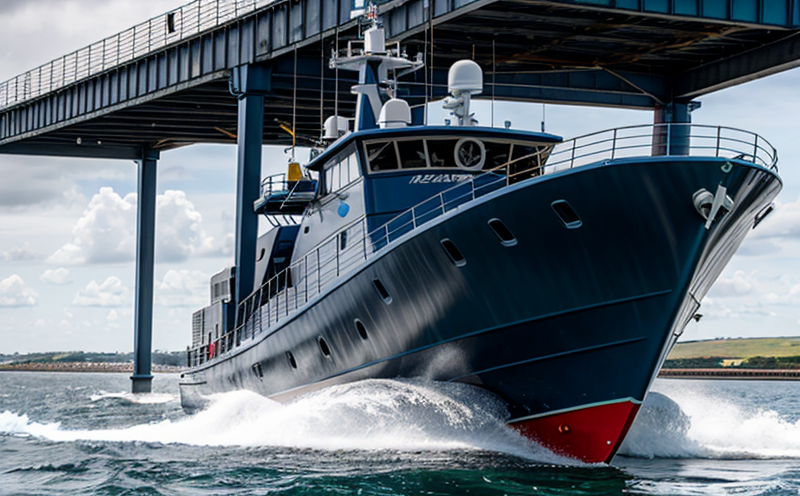ISO 15561 Engine Emission Aftertreatment System Testing
The ISO 15561 standard provides a comprehensive framework for testing and certifying the performance of engine emission aftertreatment systems. This service is crucial in ensuring that marine engines meet stringent environmental regulations, particularly those aimed at reducing harmful emissions such as nitrogen oxides (NOx), particulate matter (PM), carbon monoxide (CO), and unburned hydrocarbons.
The testing process involves several stages: preparation of the engine and aftertreatment system for testing, calibration of test equipment, execution of emission tests under controlled conditions, data analysis, and reporting results. The primary goal is to confirm that the aftertreatment system effectively reduces emissions to acceptable levels as specified in international standards.
Marine engines play a critical role in shipping operations, impacting both operational costs and environmental sustainability. By adhering to ISO 15561 testing protocols, manufacturers can ensure their products comply with global regulations, thereby avoiding legal penalties and maintaining market competitiveness. Additionally, compliance enhances brand reputation among environmentally conscious customers.
The aftertreatment systems tested under this standard include catalytic converters, particulate filters, NOx reduction devices, and other components designed to minimize harmful emissions from diesel engines. These systems are essential for reducing the environmental footprint of marine vessels while maintaining performance efficiency.
Our laboratory uses state-of-the-art equipment capable of simulating various operating conditions encountered in real-world scenarios at sea. This allows us to provide accurate, reliable test results that reflect actual engine performance and emissions levels. Our team of experts ensures adherence to all relevant international standards, including ISO 15561, during every stage of the testing process.
By offering this service, we contribute significantly to reducing marine pollution while supporting sustainable maritime practices. Compliance with these stringent emission control requirements not only benefits the environment but also helps shipowners and operators comply with international regulations and reduce potential liabilities.
Benefits
- Ensure compliance with ISO 15561 standards for engine emission aftertreatment systems.
- Validate the effectiveness of aftertreatment technologies in reducing harmful emissions.
- Avoid legal penalties and maintain market competitiveness by ensuring regulatory compliance.
- Enhance brand reputation through demonstrated commitment to environmental responsibility.
- Promote sustainable maritime practices, contributing to cleaner oceans and reduced carbon footprints.
Why Choose This Test
The ISO 15561 engine emission aftertreatment system testing is essential for several reasons:
- To verify that the aftertreatment systems installed in marine engines meet international environmental standards.
- To provide accurate, reliable data on the performance of these systems under controlled test conditions.
- To ensure compliance with maritime regulations and avoid potential legal issues or financial penalties.
- To support research and development efforts aimed at improving engine efficiency while reducing emissions.
- To offer a transparent process that builds trust between manufacturers, regulators, and the public regarding environmental performance.
International Acceptance and Recognition
- The ISO 15561 standard is widely recognized by regulatory bodies worldwide for its stringent requirements on aftertreatment systems.
- Countries including the United States, Europe, China, and India have adopted or are in the process of adopting this standard.
- Compliance with ISO 15561 ensures that products meet international standards, facilitating smoother trade between different regions.
The widespread acceptance of this standard underscores its importance in the global shipping industry. By adhering to these stringent emission control requirements, manufacturers can ensure their products are suitable for deployment across various maritime environments and regulatory landscapes.





